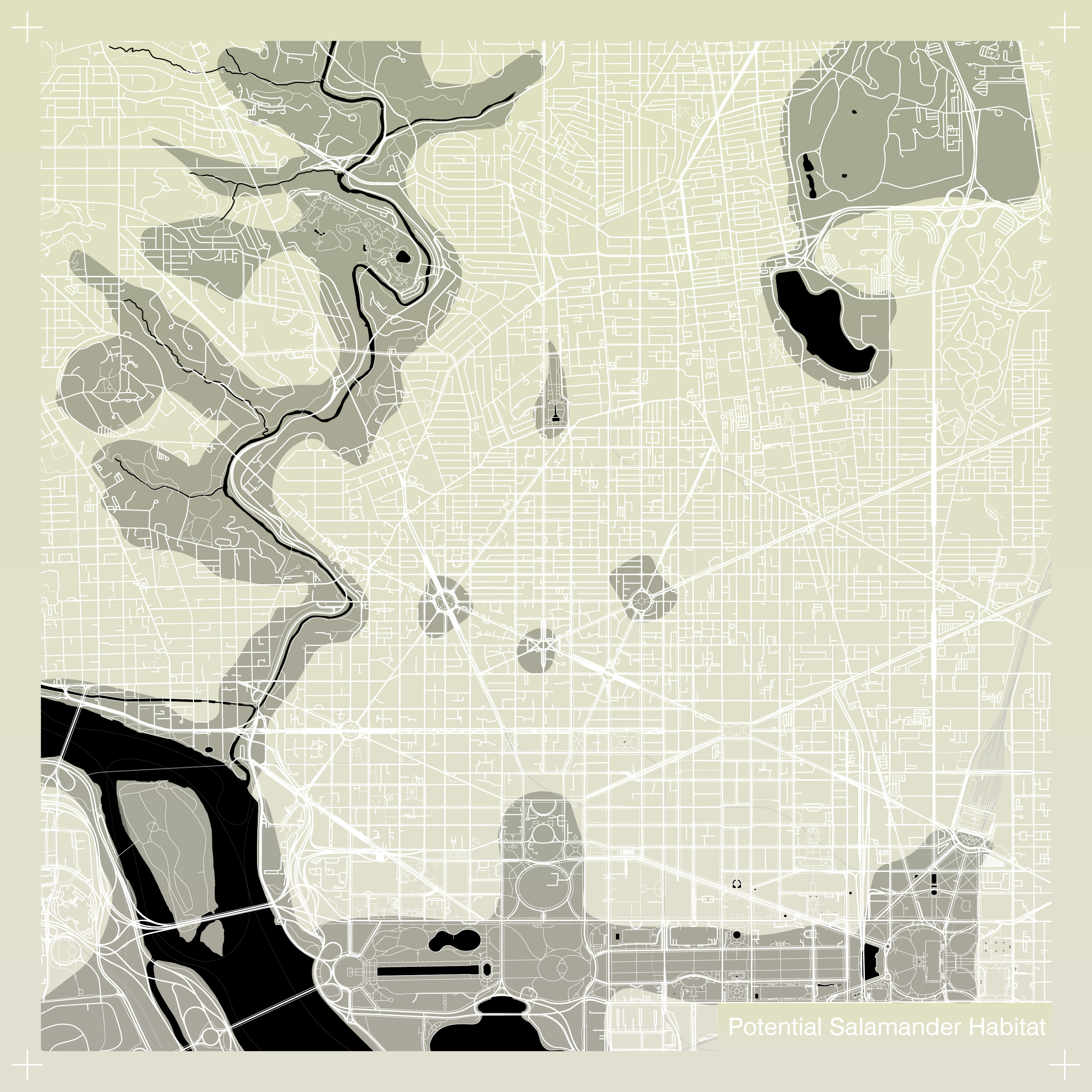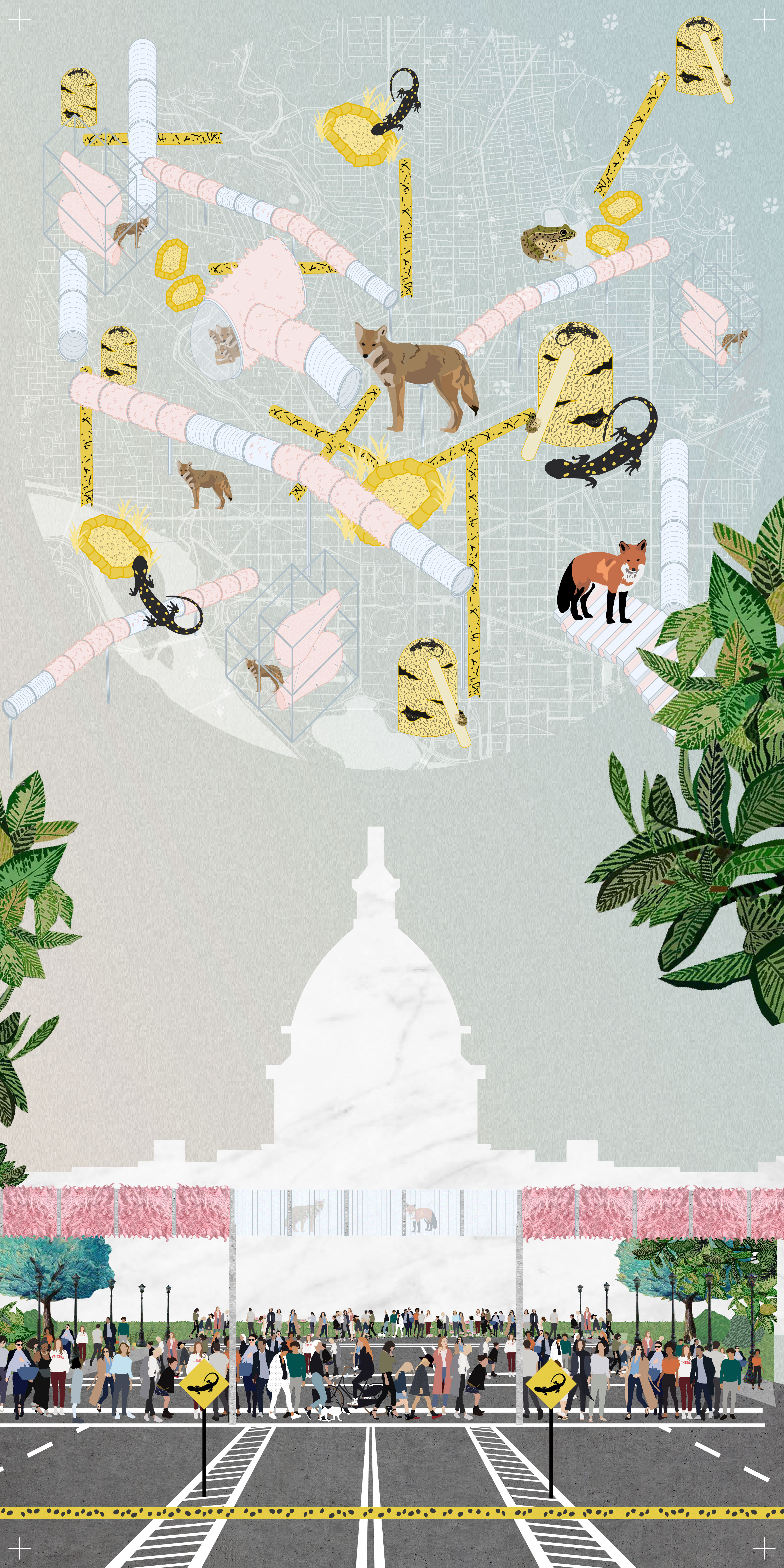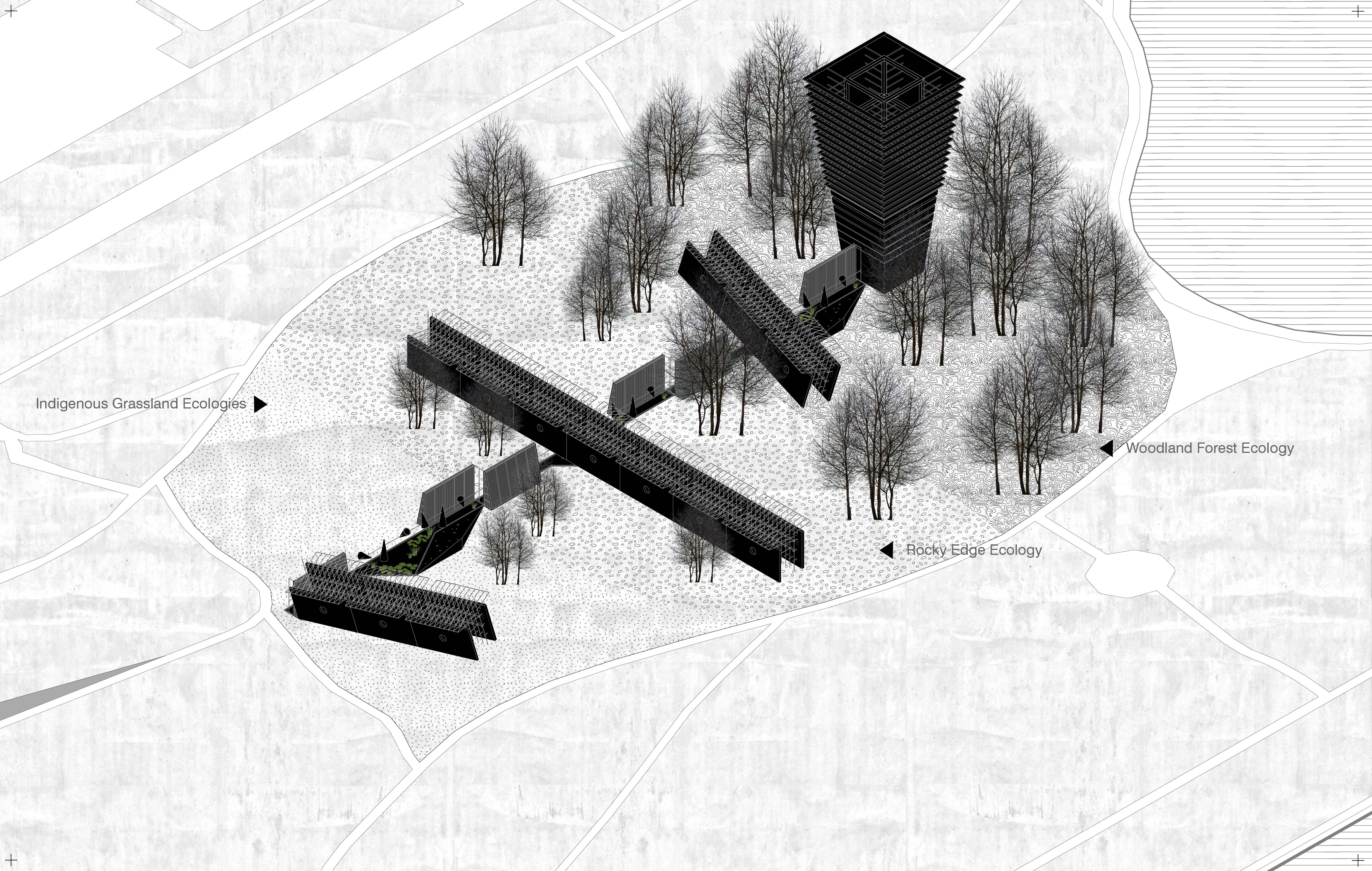Urban (Re)Wilding
M.Arch Thesis
University of Michigan | Taubman College of Architecture
Winter 2021
This proposal engages the rewilding of Washington D.C. by human provisions in response to the hostile architecture of the city and the re-emergence of wildlife in cities as amplified by the pandemic. The aim is to create small installations that form networks of species systems throughout the city to serve as a visual marker of the presence and agency of nonhuman actors. In order to shift the paradigm of the public’s perception of the role of nonhumans in urban systems, urban wildlife species must be designed for with the same care and consideration as architecture for human users.
A set of user species vital to the D.C. ecosystem are considered in the design of species-specific installations that are connected via an interspecies mobility network that engages existing human mobility infrastructure and the grid of D.C. The intent of the installations is to highlight the contrast between human perception and nonhuman experience. These systems are abstract and bright markers of animal agency, but to the user these spaces are experiential and shaped by instinctual habitat needs and tendencies. By designing small moments that are graphic and high-res to the people inhabiting D.C., the city is populated with markers of nonhuman agency and vibrancy that is often overlooked. These markers make larger ecological systems more knowable while facilitating interspecies cohabitation of urban environments.
Website

















